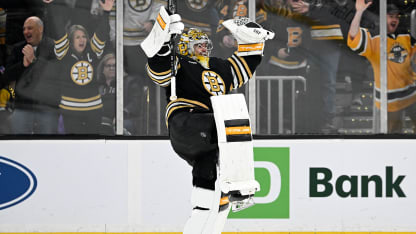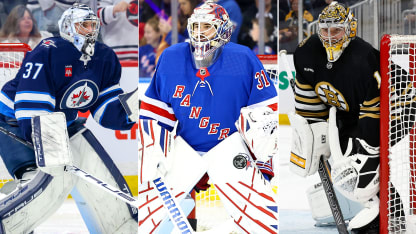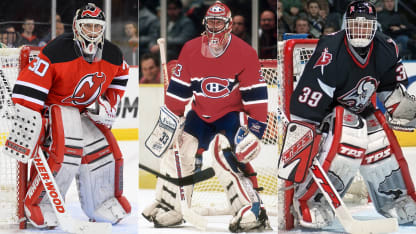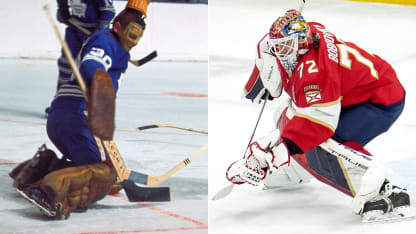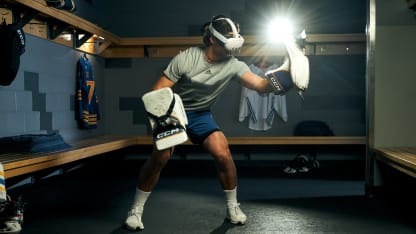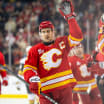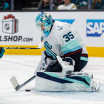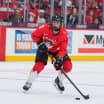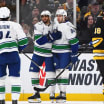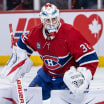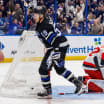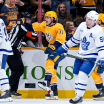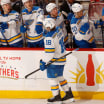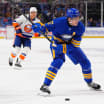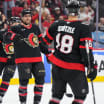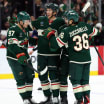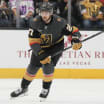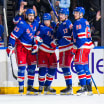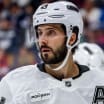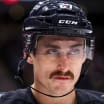Welcome to Goalie Week. NHL Social is celebrating goaltending with NHL Goalie Week from Aug. 26 to Sept. 1, reveling in the uniqueness and artistry of the puck-stoppers through the decades. Today, in a special version of NHL.com’s Unmasked, goalie guru Kevin Woodley celebrates the position as it evolves to new heights, bringing more things to love about hockey’s masked men.
There is a lot to love about goalies, but perhaps nothing more than their uniqueness.
Not uniqueness in the old stereotypes surrounding the position, the quirkiness that defined past eras when you could easily argue that purposely putting oneself in front of slap shots wearing padding so thin it could leave you badly bruised or with broken bones was a bit unique. Never mind, the fact there was a time when goalies did not wear masks.
Frozen pucks can still leave a mark, and today’s NHL goalies know well the smell of burning rubber filling their nose like a burnout in the high school parking lot whenever those pucks graze a mask or stick or shoulder pad with enough spin to leave some of that rubber behind.
But the fear factor that was once such a big part of goaltending is thankfully gone now.
The uniqueness is now found in how goalies play a position that never stops evolving.
It is found in the seemingly limitless ways goalies find to get better, whether it’s Nashville Predators goaltending director Mitch Korn bringing medicine balls on the ice for his goalies to hold out in front of them, or Seattle Kraken goalie Joey Daccord using a virtual reality program called NHL Sense Arena to dial in his glove hand between periods.
That quest has been documented here in Unmasked for the past seven years and still it seems each season brings more new ideas and discoveries about a position that exists almost as a sport entirely of its own that is being played within the sport of hockey.
Perhaps that’s because there is no one right way to play goal and few absolutes.
Even as the position roots more deeply in science, with movements broken down biomechanically like the swing of a PGA Tour golfer, there remains an artistry. No two goalies are exactly alike, even as casual observers increasingly lament how they all play in the same manner and “butterfly” has become a style label that every modern goalie wears.
Look closer and the differences are there, even if they no longer stand out as obviously as the more unique brilliance of a Dominik Hasek or Martin Brodeur.
The entire position and decisions made in real time on how to play it is an intricate series of give and take, a sliding scale attempt to balance individual strengths and weaknesses against both the type of attack being deciphered in real time, and how the defense is expected to counter it.
There are decisions to be made at all times by a goalie and they impact each other in an intricate dance.
Does the goalie cut down the angle by moving further out of their crease? Or does he hang back to be able to cover more ice in case the shooter uses the shooting option joining the rush?
Where some goalies might like the idea of getting further out of their crease, reducing how much net that shooter can see behind them -- and relying on geometry to make sure any shot is more likely to hit them -- others prefer to stay further back in their crease, knowing it gives them more time to react to the puck as it leaves a shooter’s stick blade.
Few exemplified the latter example as obviously as Hall of Fame goalie Henrik Lundqvist, who went from being an aggressive, come-out-then-retreat goalie in Sweden to staying back near his goal line with the New York Rangers under the tutelage of goaltending coach Benoit Allaire. But even Lundqvist’s extremes contained a nod to the “cut down the angle” crowd, at least visually, as he began holding his glove up near his left shoulder to at least visually eliminate some of the net his depth opened in the eyes of a shooter.
